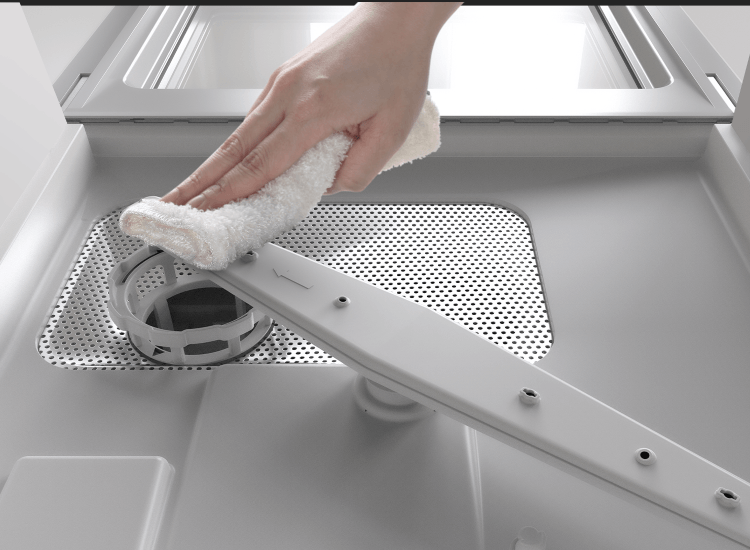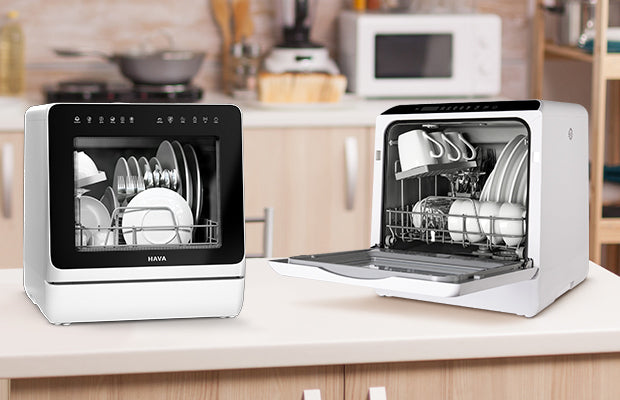
Introduction
Dishwashers do a great deal of messy work for you, so every once in a while, you should do something for your dishwasher to keep it running smoothly and efficiently. Cleaning your dishwasher is one of the best ways to do this. If you choose not to clean your dishwasher, sooner or later, it will start to smell terrible! Cleaning your dishwasher on a regular basis will also keep calls for repairs down and keep your dishwasher running good as new.
This article explains why you need to clean your dishwasher frequently, what you will need to clean it, and how often you should clean it. So, let’s get started!
Part 1: Why should you clean your dishwasher frequently?
Cleaning your dishwasher helps you avoid terrible smells and microscopic organisms that may develop if you don’t clean it. Foregoing cleaning can also cause your machine to stop working. The best way to know when your dishwasher needs cleaning is simply by paying attention to it when working with and around it.
When you take your clean, spotless dishes out of the dishwasher, check to see if food particles have accumulated around the channel. It’s best to eliminate them so they don’t spoil, stop up water flow, and stink. To keep the dishwasher channel clean, wash it with vinegar. When cleaning your dishwasher, you may want to wear gloves. At regular intervals, fill a dishwasher-safe bowl or mug about two-thirds full of white vinegar and place it on the dishwasher rack. Run the dishwasher on a regular cycle with heated water for additional sanitization. The vinegar will help remove grime, oil, and food particles from the dishwasher’s dividers and racks. After that, it just washes down the channel. It’s that easy!
Part 2: What should you use to clean the dishwasher?
Grime can amass inside your dishwasher, to the point where your dishes won’t come out clean and shiny. Accumulated food and dirt can also cause undesirable scents.
Try to clean your dishwasher by using vinegar to take out the grime and smells. To start with:
- Empty the dishwasher.
- Pour about a cup of white vinegar in a dishwasher-safe bowl and place it on the dishwasher’s top rack.
- Run the hottest water cycle on the dishwasher.
- Cancel the drying cycle, and instead, open the dishwasher door to let it air-dry.
You can also utilize dye to clean the inside of your dishwasher and eliminate extreme stains, foods, and mold, but only if the dishwasher isn’t made with treated steel or contains hardened steel. Empty a cup of blanch into a dishwasher-safe, fade-safe bowl and place it on the top rack of your dishwasher. Then, run a full cycle, but skip the drying cycle.
To clean in and around the gasket, use a toothbrush and three cups of high temp water mixed with a 1/2 cup of vinegar. But be gentle! Some experts may advise you to just use warm water, so adhere to your dishwasher directions.
Note: Do not utilize fade in a tempered steel dishwasher or a dishwasher containing treated steel, as fade will harm it. Don’t use bleach either. Clean with preparing pop or vinegar.
Part 3: How often should you clean your dishwasher?
More and more dishwashers today are equipped with self-cleaning features. If yours does not, try to clean it at least once a month. Your proprietor’s manual will contain more essential data on the most proficient method to clean the dishwasher channel. When you are about to clean your dishwasher, remove and wash the track utilizing these methods:
- Open up the upper dishwasher, and gently remove the upper channel. If your model has a lower channel, remove it as well.
- Check the channel base inside the dishwasher for any food that may have accumulated. Wipe clean with a damp microfiber towel.
- Wash the channel by hand in warm, sudsy water. Delicately scour it with a delicate fiber brush to remove food particles.
- Flush the channels thoroughly under warm running water.
- Reinsert the channels. On the off chance that the upper channel has a locking mechanism, be sure to lock it back before you run the dishwasher again.
Cleaning your dishwasher channel is another important step towards keeping your dishwasher running smoothly. To start, pour one cup of white vinegar in a large, microwave-safe bowl and heat it in a microwave for up to 15 seconds.
Take out the bowl and mix in two tablespoons of preparing pop. Empty the blend into the channel at the lowest part of the dishwasher.
Heat up a pot of water. As your mixture is subsiding, carefully pour the water down the dishwasher channel to help remove any remaining food and debris. Make sure you don’t burn yourself with the hot water!
Note: If you have waste disposal, verify that you have proper flow. Sometimes, the dishwasher may become backed up due to clogged debris.
Conclusion
Try to follow the above-said steps for effective cleaning of your dishwasher. If you don’t clean your dishwasher, microorganisms may accumulate inside your dishwasher, and you may end up falling ill, so try to clean it properly every month. While it may not be simple, it’s not that hard either. Also, after cleaning the dishwasher, use a towel to wipe it down. And, if you still smell odors, clean it again in the same process mentioned above. If you are still confused about how to clean a dishwasher, contact an expert to clean your dishwasher.















